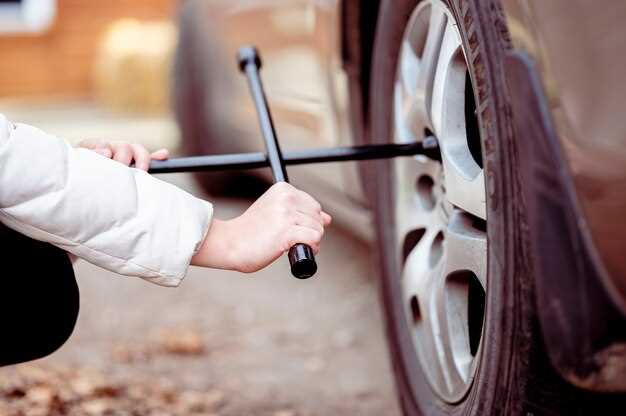
Proper tire maintenance is essential for ensuring safety and performance on the road. One vital aspect of tire care is understanding the concept of wear and implementing an effective rotation schedule. Tires are subjected to varying forces and conditions, leading to uneven wear if not rotated regularly. This article will explore the best practices for flipping your tires to promote longevity and consistent performance.
Uneven tire wear can significantly impact handling and fuel efficiency. When tires wear unevenly, the vehicle’s balance is compromised, leading to poor traction and increased risk of hydroplaning. To prevent these issues, establishing an optimal tire flipping schedule is crucial. By alternating the position of your tires, you can ensure even wear and extend their lifespan, saving you money in the long run.
This article will provide detailed guidelines on how to effectively implement a tire rotation schedule, including the recommended intervals and techniques tailored to different vehicle types. Whether you drive a passenger car, SUV, or truck, understanding how to maintain balanced tire wear through proper rotation methods will enhance your driving experience and safety.
Determining the Right Frequency for Tire Rotation

Tire rotation is crucial for maintaining even wear and extending the lifespan of tires. Various factors influence the optimal frequency of this process, and understanding these elements can lead to more efficient vehicle performance.
Typically, most automotive manufacturers recommend rotating tires every 5,000 to 7,500 miles, or approximately every 6 months. However, this mileage can vary depending on driving habits, tire type, and vehicle specifications. For instance, vehicles with front-wheel drive often experience more wear on the front tires, necessitating more frequent rotations compared to rear-wheel drive vehicles.
Monitoring tire wear is essential for determining the right rotation schedule. Visual checks for uneven wear patterns, such as cupping or bald spots, can indicate the need for earlier rotations. Additionally, the driving environment plays a significant role; frequent city driving, which involves stopping and starting, may lead to different wear patterns compared to highway driving.
Using a tread depth gauge can aid in assessing when to rotate tires. When the tread depth on one tire differs significantly from the others, it may be time to rotate to ensure uniform wear. Regularly checking tire pressure is also important, as improper inflation can accelerate wear regardless of the rotation schedule.
Ultimately, adhering to a consistent tire rotation schedule tailored to your specific driving conditions and vehicle type will optimize tire performance, enhance safety, and improve overall fuel efficiency. Staying proactive in this maintenance can prevent costly replacements and ensure a smooth driving experience.
Identifying Signs of Uneven Tire Wear

Uneven tire wear is a critical issue that can compromise vehicle safety and performance. Recognizing the signs early can help you implement an optimal rotation schedule and extend the life of your tires.
One of the primary indicators of uneven wear is a difference in tread depth across the tire. If you notice that one edge of the tire is significantly more worn than the center or opposite edge, this may signal improper alignment or inflation issues. Regularly checking tread depth with a gauge can help identify this problem before it escalates.
Another sign is the presence of bald spots or flat patches on the tire surface. These areas typically indicate a need for more frequent rotation, as they can develop due to imbalanced weight distribution while driving. Inspecting your tires for such anomalies can reveal whether a systematic rotation schedule is being followed.
Additionally, inspecting for cupping or scalloping around the tread can provide valuable insights into tire health. This type of wear often results from suspension issues or inadequate tire pressure. If you observe a wavy pattern along the edges, it is crucial to address the underlying causes promptly.
Pay attention to how your vehicle handles while driving. If you experience vibrations or pulling to one side, these could be signs of uneven tire wear due to misalignment or improper rotation. Regular rotations can help mitigate these issues and ensure a smoother ride.
Keeping an eye on these signs of uneven wear can lead to better maintenance practices, promoting more evenly worn tires and enhancing overall vehicle safety. Regularly scheduled tire rotations are essential in preventing uneven wear and should be adhered to as part of your vehicle’s maintenance routine.
Adjusting Tire Pressure for Improved Longevity
Maintaining the correct tire pressure is crucial for enhancing tire longevity and minimizing uneven wear. Properly inflated tires ensure optimal contact with the road, which leads to better traction, improved fuel efficiency, and increased safety. Overinflation and underinflation can both result in rapid tire wear, compromising their overall lifespan.
When tires are overinflated, the center of the tread wears more quickly, reducing the contact surface with the road. This can lead to a harsher ride and decreased traction, especially in wet conditions. Conversely, underinflated tires cause the edges of the tread to wear faster, leading to a significant increase in rolling resistance and heat buildup, which can result in blowouts.
To achieve ideal tire pressure, it is essential to regularly check and adjust the pressure based on the manufacturer’s recommendations, typically found on the driver’s side door pillar or in the owner’s manual. Tire pressure should ideally be checked when the tires are cold, as heat from driving can increase pressure readings.
Incorporating regular tire pressure checks into your vehicle maintenance routine can help prevent uneven wear and extend the lifespan of your tires. This simple act not only enhances performance but also contributes to overall vehicle safety and efficiency.
Key Benefits of Proper Tire Pressure:
- Extended tire lifespan: Reducing wear and tear on the tread.
- Enhanced fuel efficiency: Improving miles per gallon by decreasing rolling resistance.
- Improved safety: Providing better handling and stopping power.
Adjusting tire pressure as part of regular vehicle maintenance is a proactive approach that ensures tires perform at their best while lasting longer and yielding significant savings over time.
